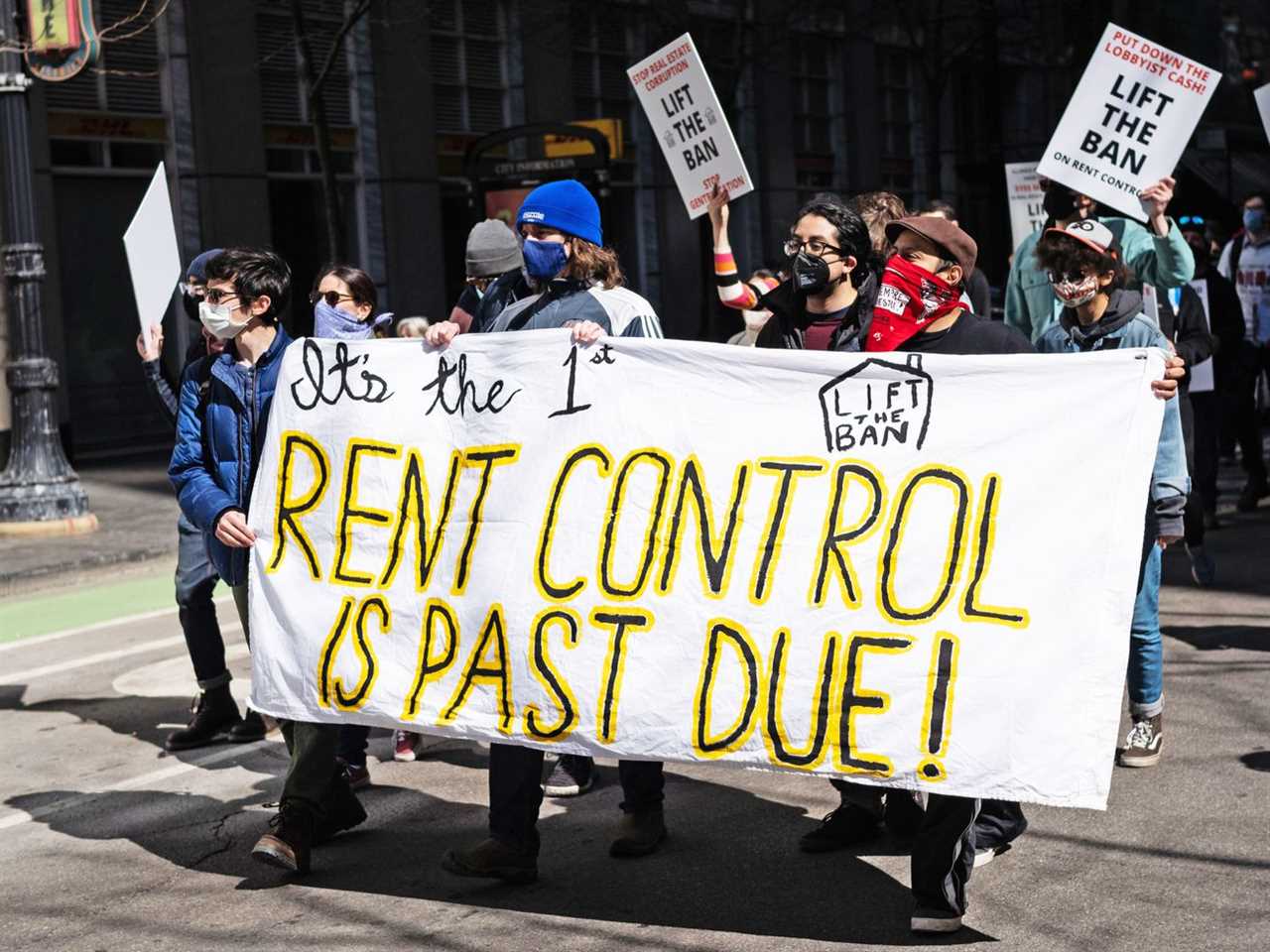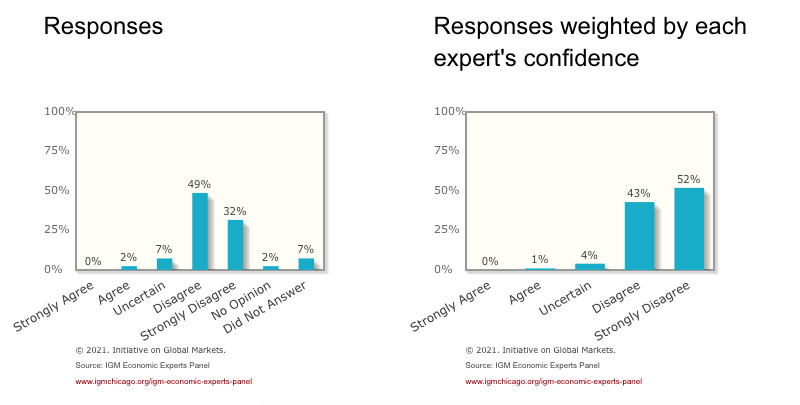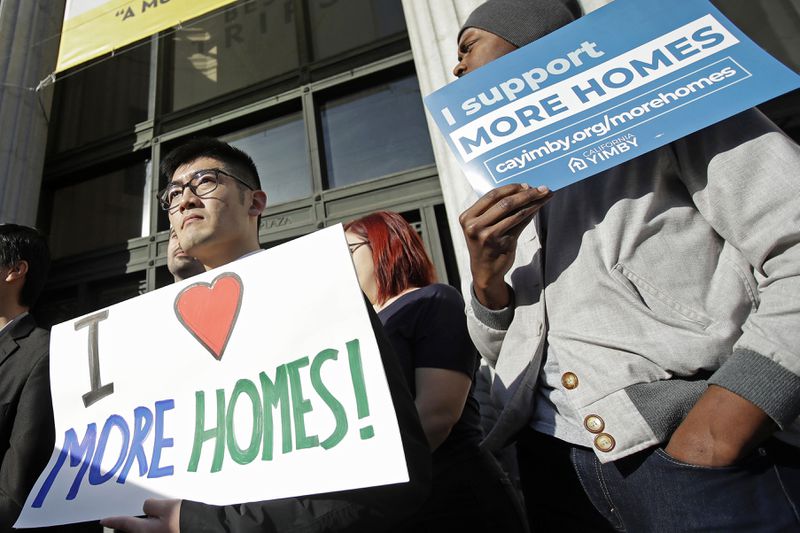
From St. Paul to Boston, rent control is making a comeback.
Renting has a stability problem.
As a renter, you don’t know if your landlord might sell your home, turn it into condos, or evict you. You don’t know if you can make any lasting ties in a community. Part of this stability problem is a cost problem.
Renting can already be very expensive in America. According to the National Low Income Housing Coalition, the share of households who are rent-burdened (or who spend more than 30 percent of their income on rent) has been increasing; in 2017, nearly half of all renter households in the US fit in the category. If your rent suddenly becomes unaffordable, you often have just a few short weeks to find alternative accommodations and move.
Now tenant advocates and officials in some cities across the US are reconsidering an oft-maligned policy: rent control.
As Bloomberg’s Kriston Capps notes, the policy is “making a comeback.” Santa Ana, California, adopted a rent control ordinance; in Boston, voters elected a new mayor who ran in part on rent control; and in St. Paul, Minnesota, “voters enacted one of the most stringent rent control policies in the nation.”
Not all rent control policies are alike: Some programs cap annual rent increases or put limits on the absolute price of a unit; it can be granted to certain low-income people or applied to all buildings of a certain type.
Voters are backing these measures in response to the skyrocketing price of housing.
But all of these policies share a problem if enacted as the exclusive solution to rising rents. As economists often stress, rent control fails to address the core issue of why housing is so expensive to begin with: lack of supply. In particular, states and cities have a bevy of rules and regulations regarding what kind and size of new homes can be built that overwhelmingly make it illegal or unprofitable to build small single-family homes, multi-family homes, and dense neighborhoods.
Despite economists’ consternation, demand for rent stabilization policies is growing, in particular in high-cost-of-living cities where a greater share of rent-burdened tenants are higher-income young people with political power. As historian Suleiman Osman explained in his book The Invention of Brownstone Brooklyn, New York City’s history of rent control can be explained in part because a “large number of white professional renters gave the [tenants] movement muscle unmatched in other cities.” As higher-income professionals stay renters for longer, renters in America’s biggest cities are gaining in political power.
According to the National Multifamily Housing Council, as of September 2020, California, New York, New Jersey, Maryland, Oregon, and Washington, DC, have some form of rent control either at the state level or below. (The number of units covered in each of those places could vary wildly.)
It’s clear that these areas share something else in common: They have high-demand labor markets — superstar cities — where the rising cost of housing is largely due to localities’ reluctance to allow more housing to be built even as demand has shot through the roof.
Rent control should be understood as a remedy for displacement, rather than a solution to the spiraling cost of housing. It’s best as a measure that can help keep current tenants from being displaced from their neighborhoods, and as part of the long-term project of solving America’s housing shortage.
Both the case for and against rent control are more nuanced than their opponents give them credit for. There’s also little empirical research on rent control. While economic theory indicates that rent control’s costs are high (more on this later) — it was only a few decades ago when the field was largely unified in opposition to minimum wage policies. Basic economic theory held that the costs of implementing a minimum wage (namely, fewer jobs) would largely outweigh the benefits of higher wages. But after a flurry of empirical research was conducted, researchers just didn’t find the large costs to employment opportunities that they expected and minimum wage became a lot more popular among experts.
Rent control could be next.
It’s become abundantly clear that even if states do begin to build more homes, it will take years if not decades to rebalance supply and make housing more affordable, and in the meantime millions of families will continue to suffer. Economists are right to be worried about the ways rent control could worsen the housing crisis, but rent control can work.
The case against rent control
The fastest way “to destroy a city, other than bombing.”
This quote about rent control has been attributed to the late Assar Lindbeck, a Swedish economist who once chaired the prize committee for the economics Nobel, and it’s the dominant sentiment of most economists. This statement is purposely hyperbolic, but Lindbeck wasn’t kidding about economists’ instinctive disdain for the idea.

University of Chicago Initiative on Global Markets
The logic is simple: If you set a price ceiling below what the market price would be, you will reduce the incentive for people to supply that good. If you’re a hatmaker and the government says you’re not allowed to charge more than $5 for hats you’ve been able to sell for $10, you’ll probably stop making as many.
Of course, here we’re not talking about hats, we’re talking about housing. If fewer hats are produced, that’s not great, but if fewer homes are produced, that’s catastrophic. We’re facing a national housing shortage of 3.8 million homes, and it’s the leading contributor to the spiraling cost of housing and modern homelessness. It also could induce landlords to reduce their investment or upkeep of properties if they see their profits being slashed.
Scarcity empowers the people in control of the scarce resource, and rent control does nothing to make housing less scarce. Landlords can still find ways to extract income more in line with the true price of the apartment in a housing-scarce city. In Berlin, despite the city’s rent control laws, renters are being asked to pay thousands of euros for furniture or appliances in order to get a lease. Bloomberg’s Alice Kantor reports that “one ad recently asked 25,000 euros ($28,300) up front for kitchen equipment, a TV and furniture.” The ad was for a one-bedroom apartment renting at 930 euros a month.
At best, critics say, rent control empowers one small group of people: the tenants who were living in buildings when the law was enacted. Arpit Gupta, a professor of finance and economics at New York University who said he is a “little skeptical of rent control,” explains that these policies often act as “a one-time transfer of equity from landlords to current tenants.” That is, instead of helping make renting permanently affordable, rent control policies just transfer the benefit of housing scarcity from the landlord to the current tenant.
The problem is that there are a lot more “future tenants” than there are current tenants, and at some point even current tenants will likely move. So while there is a clear benefit to existing renters when a rent control ordinance is passed, it’s important to look at what happens to rents and renters in aggregate.
That’s what Stanford economists Rebecca Diamond, Tim McQuade, and Franklin Qian did in a 2019 paper focused on rent control in San Francisco. They found that the policy did make beneficiaries 10 to 20 percent more likely to remain in their homes in the medium to long term than tenants who weren’t covered by rent control. They also note that “the effects of rent control on tenants are stronger for racial minorities, suggesting rent control helped prevent minority displacement from San Francisco.”
However, landlords directly affected by rent control pivoted away from providing rental units towards other types of real estate, like condos (this could lead to more evictions as landlords seek to avoid rent control policies). Overall, the authors find it reduced the available rental housing by 15 percent and that the policy “likely drove up citywide rents, damaging housing affordability for future renters.”
Alternatively, Brigham Young University economist David Sims’s 2006 paper on rent control in Massachusetts found that there was basically no effect on the construction of new housing.
Economists also have distributional concerns. When landlords cannot discriminate based on price, they discriminate in other ways, for instance on their religious preferences, in favor of people who are members of their own race and class, or even against families with children. There is evidence this happens in the housing market already, to be fair. While there are laws on the books to prevent this sort of discrimination, almost no one is even attempting to enforce them. Even with a robust enforcement apparatus, it would be very hard to catch.
In another paper, Sims’s findings indicate that relatively richer people are more likely to benefit from rent control policies, and according to a review of the literature by the Urban Institute, Black and Hispanic residents are underrepresented in rent-controlled units. The authors ultimately conclude that rent control’s “benefits are concentrated among wealthier, whiter households.”
Economists are right that rent control does not fix the fundamental problem of the rising cost of housing and its application to that problem is wrongheaded. Rent control needs to be seen not as a tool for addressing the cost of housing (we know how to do that!) but as a stabilization tool for tenants and communities that are continually shunted from neighborhood to neighborhood by economic forces they often have no say in.
The case for rent control — or how I learned to stop worrying and love the bomb
In a world where housing is a scarce resource, some tenants have to lose.
There aren’t enough homes, so how do we decide who gets them? Without rent control, the losers are people with less money; those who cannot afford increases in rent are forced out of their neighborhoods, and people who can afford them get to stay or move in. Rent control gives policymakers a chance to redistribute the pains of scarcity in the near term. Even research that concludes rent control is on net harmful to tenants in the long term concedes that it reduces displacement for current tenants.
This is especially important because fixing the underlying issue in America’s high-cost cities and suburbs is a long-term solution that will require millions of new homes to be built. Even if everyone agreed right now to pursue the goal of housing abundance, it could still take decades for the housing markets to rebalance.

Jeff Chiu/AP
So what is to be done for the tens of millions of rent-burdened families before we can reach housing abundance? Should we simply allow the cycles of displacement and segregation to occur without any policy intervention?
Rent control is the answer.
Of course, it’s not the whole answer. A well-designed rent control policy exists in tandem with eliminating exclusionary zoning laws, reducing the cost of housing construction, and providing universal vouchers to help low-income tenants afford their rent.
Even research that is done by those skeptical of rent control finds that it is at least successful at reducing displacement of current tenants, in particular the Stanford study that found rent control reduced displacement by up to 20 percent. According to the Urban Institute review, “If rent control is judged on its ability to promote stability for people in rent-controlled units, evidence has generally found it to be successful.”
Then the question becomes the policy design.
There, the devil is in the details. To encourage people to still build more homes, it is important to exempt future construction from rent control and to allow landlords to increase rents annually by a moderate sum tied to inflation. Policymakers also want to make sure there are incentives to keep existing rental stock well-maintained; one way to do so is by allowing for vacancy decontrol so that when a tenant moves out, a landlord can upgrade the unit and charge a higher rent to the next tenant.
When it comes to worries that rent control policies might increase evictions (both formal and informal) as landlords are motivated by profit to convert to condos or force their tenants to vacate so they can renovate, the answer is that, similarly to all types of abuses of power in the market, there needs to be more oversight. A few policies that cities and states should enact are:
- Just cause eviction statutes, which would require the landlord to justify kicking a tenant out of the property. The government can define what a reasonable justification is, including but not limited to failure to pay rent, desire to add another tenant to the renter’s lease, violation of lease terms, illegal activity, etc.
- Right to counsel to ensure that tenants are not just getting steamrolled in these types of hearings. Numerous studies have pointed to the fact that the vast majority of tenants are going unrepresented by counsel.
- A rental registry to keep track of tenants and landlords. One of the biggest factors leading to informal evictions is that the power imbalance between very low-income tenants and landlords leads the former to simply comply when told to leave their home, even if they have the right to stay. By creating a rental registry, landlords will know that their lease terms are being monitored by local officials and that they will be easily caught if they informally or illegally evict tenants in order to get around rent control laws.
Skeptics will correctly note that implementing all these ideas would increase the costs of renting out properties, which might push some landlords toward condo conversions or away from developing new units. That’s why it’s important to simultaneously make it cheaper and easier to build and renovate housing. As almost all urban economists have noted, the primary constraint on housing supply in America’s cities and suburbs is the regulatory morass that drives up the cost of developing and producing new homes and makes it nearly impossible for a landlord to extract multiple rents from a single lot by building multi-family housing.
“The limits on housing construction are basically about land use,” explained J.W. Mason, an economics professor at John Jay College. “In an exurban setting, you have a lot of vacant land and developers are deciding ‘is it profitable enough to build something here,’ and that’s what determines whether new housing gets built. So you could imagine in an environment like that, rent control might [have] a significant effect on new construction. ... In a dense, major city ... the limit on housing is not how profitable developers expect to be but on the amount of land that’s available for developing housing.”
There is, of course, the NIMBY problem. Rent control might insulate its beneficiaries from rising rents leading to greater opposition to new housing development. But there’s evidence that some renters oppose new housing out of fears of displacement and will change their minds once rent control insulates them from quickly rising rents.
Opponents of rent control might chafe under the insinuation that there are no alternatives to rent control. One of the best ideas is a social insurance program, proposed by Diamond and endorsed by economist Noah Smith, that would entail the government compensating renters via tax credits or direct payments if they see inordinate rent hikes. It could be funded by taxes or fees levied on landlords, reducing the distortionary effects of rent control that is not equally applied.
Instituting demand-side programs like this under conditions of extreme scarcity comes with baggage of its own. Namely, the increased money in tenants’ pockets is passed through to the landlord in the form of higher rents. However, a social insurance program in tandem with making it easier to build new housing units could also be a good idea, though the policy design of such a program is more complicated than a rent control policy.
Rent control does not and will not fix the underlying cost problem, and in a vacuum, a new rent control policy would likely exacerbate the supply crisis. But rent control as a tool for reducing displacement and as a part of a broader housing policy in high-cost cities and suburbs is necessary. Economists may be wary now, but if they don’t get on board and help design these policies, cities may be doomed to repeat the mistakes of the past.
----------------------------------------
By: Jerusalem Demsas
Title: The case for rent control
Sourced From: www.vox.com/22789296/housing-crisis-rent-relief-control-supply
Published Date: Thu, 02 Dec 2021 16:20:00 +0000






